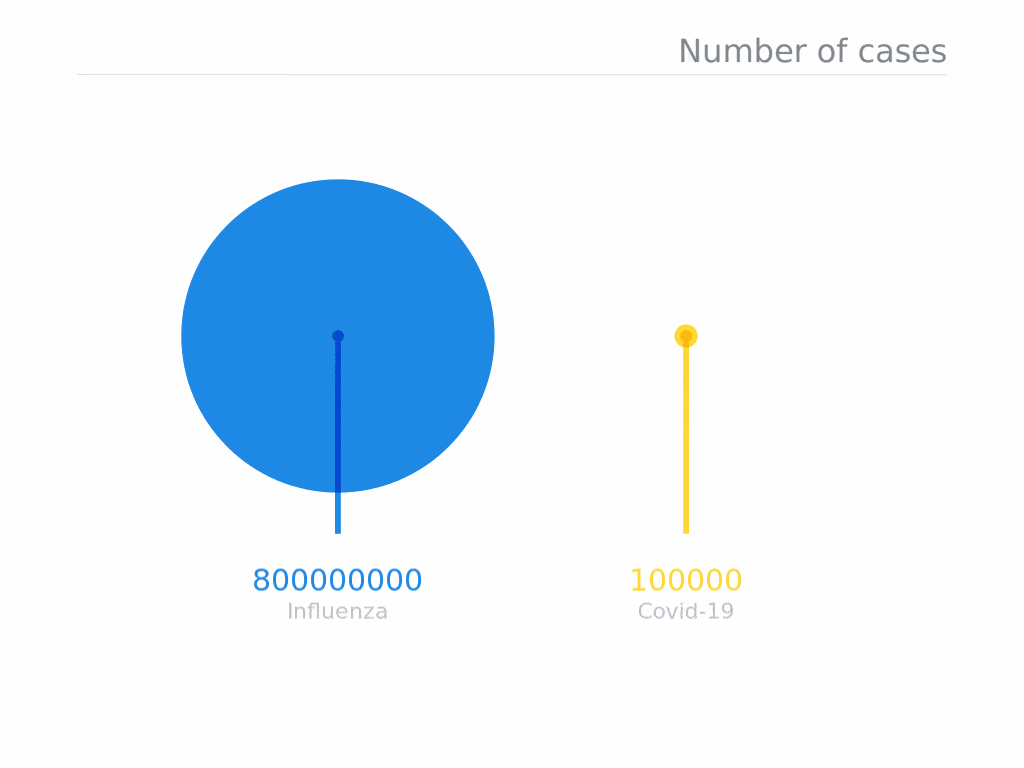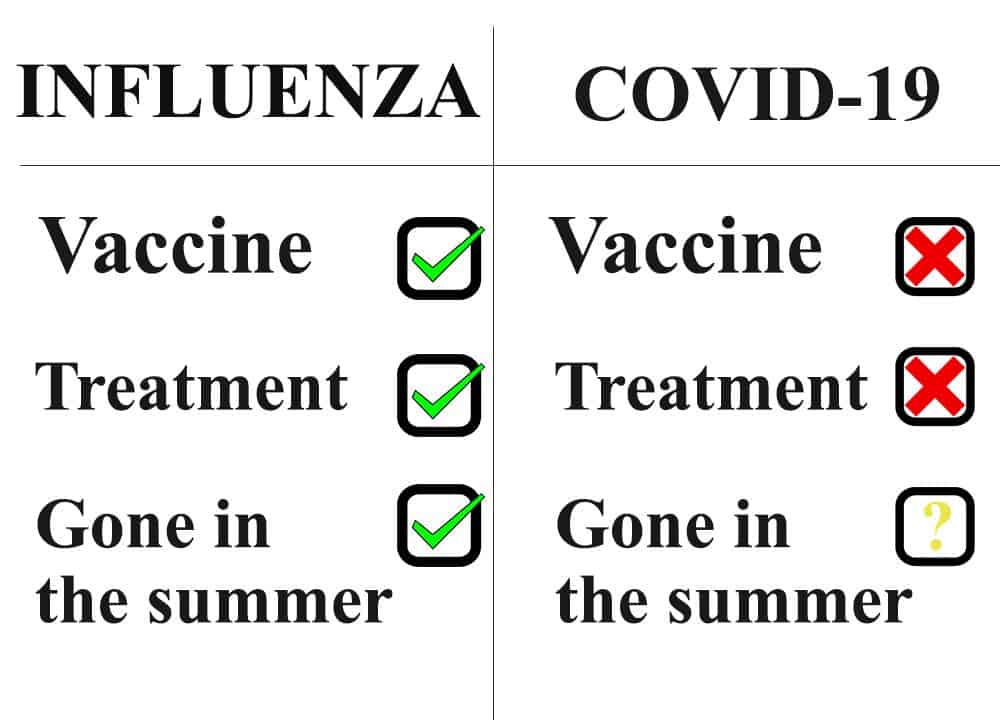We’ve all undoubtedly seen the flurry of news and articles about the new coronavirus outbreak. If you’ve kept an eye out, you’ve probably also seen comparisons with the flu.
We’ve written a more detailed article about the differences between the two, but here are a few simple charts to help you get an idea.

When it comes to the number of cases, Covid-19 isn’t even in the same league as the flu. It’s hard to say how many people suffer from the flu every year, but it’s in the tens or hundreds of millions — one estimate from the WHO puts the figure at 800 million, which is 10% of the world’s population.
At a first glance, this might seem to suggest that we shouldn’t even bother with the coronavirus. The infections and fatalities caused by the flu are several orders of magnitude higher than that of the coronavirus.
But the real key here is that influenza is already an established seasonal disease that affects so many people. Let’s see how it compares to Covid-19 in other regards.

In any epidemic, R0 is a key parameter — the basic reproductive ratio (or basic reproduction number) is the expected number of cases directly generated by one case. Simply put, in a population that is susceptible to infection, one infected person will spread the disease to R0 people.
The higher the number, the more contagious the disease. Of course, R0 can vary from population to population and is mostly an average, but it’s a crucial average. The R0 value of the coronavirus is not well-known as this is an active outbreak, but most estimates put it around 2 – 3.4, whereas the flu’s R0 is 1.3. This might not seem like a big difference, but when you compound it over an entire population, it grows dramatically.
Covid-19, it seems so far, is more contagious than the flu.
The major problem emerges when we start looking at the fatality rates. Here are the fatality rates observed so far, by age, for Covid-19:
Now here is the same thing for the seasonal flu:
The other columns are there — it’s just that they’re too small to see, even on a zoomed-in visualization. The reason why influenza kills so many people is because it infects so many in the first place — if they’d have a comparable number of cases, we’d likely see far more fatalities caused by Covid-19.
So that’s a big part of the reason why everyone is paying so much attention to this: it’s a superflu, much more potent than what we see with influenza. It’s also an unknown, and we don’t really know that much about it.
Like, for instance, if it’s gone in the summer or not.

It’s because Covid-19 is such a new and poorly understood condition that officials are so wary of it. This means that we don’t know how it will evolve, and we don’t have a vaccine or a treatment for it.
Meanwhile, the vaccine for influenza has been around for years, and although vaccination rates are still lagging, the vaccine is there and can be deployed for vulnerable and at-risk populations. In severe cases, treatments also exist, which helps to explain why the influenza fatality rate is so low.
The influenza is also gone in the summer, whereas we’re not sure if Covid-19 will do the same. In fact, there is evidence that this will not be the case, since the disease has spread in countries such as Singapore in temperatures of over 30 °C (86 °F).
Lastly, the number of cases continues to increase. We don’t know when it will stop, and understandably, everyone wants it to end as quickly as possible — but there are few guarantees.
The coronavirus is essentially a superflu: it has similar symptoms but seems to be much stronger. We don’t know if it will stop in the summer or if it can become seasonal. We don’t know how long it will be until a vaccine and treatment are established, although efforts are already heavily underway.
It’s not the apocalypse, but it’s worth treating very, very seriously. After all, one seasonal flu is well enough, we don’t need a global superflu on our hands.






